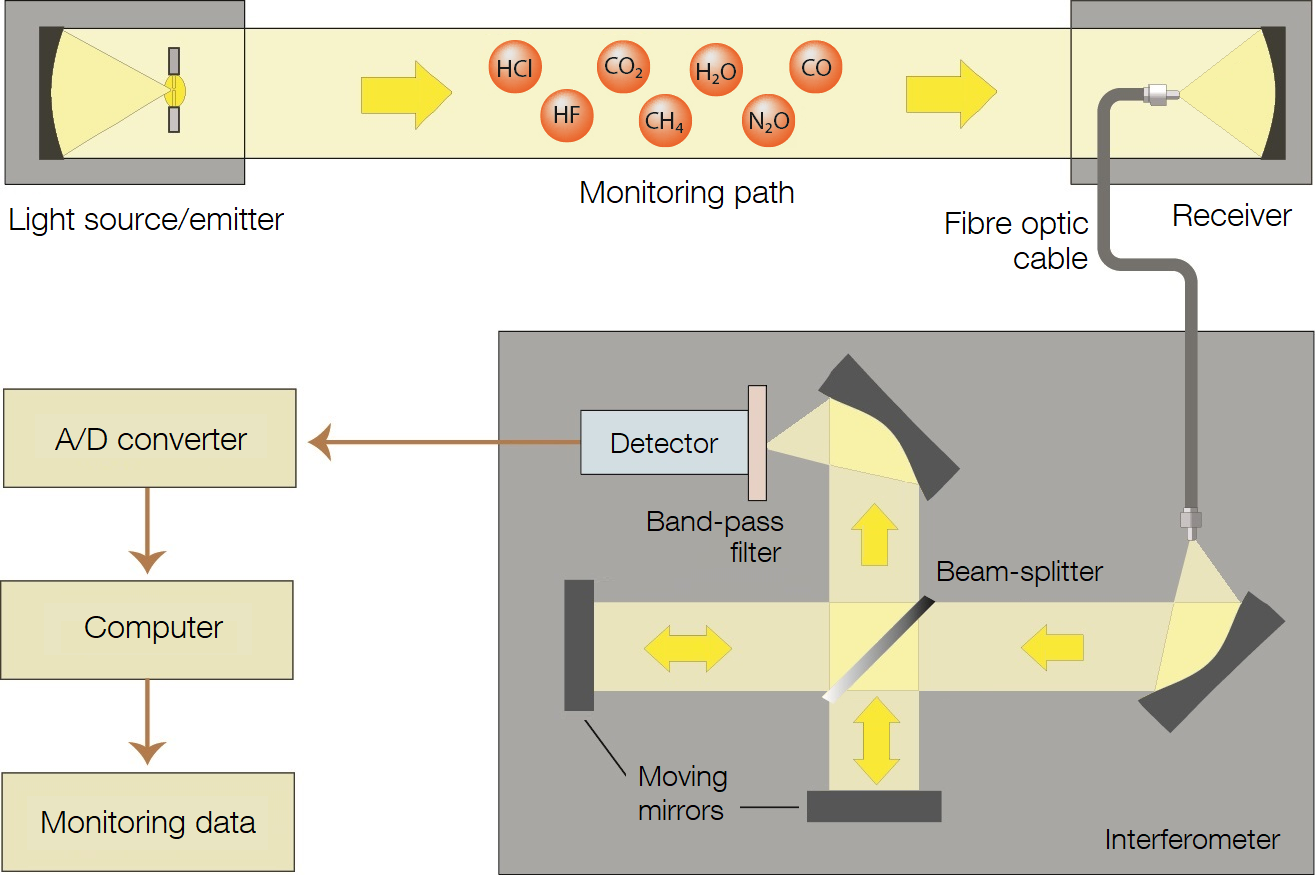An important complement in the IR range
Different types of molecules absorb light in different wavelength ranges. To monitor concentrations of molecules that absorb UV light, UV-DOAS technology is used. This technique can also be used for some molecules that exhibit IR absorption, but sometimes it is not enough. For such cases, we offer instruments based on FTIR-DOAS technology.
SIMILARITIES AND DIFFERENCES BETWEEN UV-DOAS AND FTIR-DOAS
Just as for the UV-DOAS technology, a light beam is projected towards a receiver that forwards the light via an optical fiber to the analyser. As with the UV-DOAS technique, different types of molecules in the light beam absorb different wavelengths. And it is again about monitoring a well-chosen spectrum, but now in the infrared wavelength range. In fact, one and the same light beam can be used to simultaneously provide a UV-DOAS instrument and an FTIR-DOAS instrument with light to analyse.
The analyser used in the FTIR-DOAS technique contains a computer and associated control electronics just like an analyser for UV-DOAS, but instead of a spectrometer there is an interferometer. An interferometer is an excellent tool for monitoring the spectrum in the infrared region, but it does not work for ultraviolet light. The interferometer and the spectrometer, which are well suited for monitoring UV light, therefore complement each other, and thus the UV-DOAS and FTIR-DOAS techniques also complement each other.

HOW DOES THE INTERFEROMETER WORK?
The heart of the interferometer is a beam splitter that splits the light towards two moving mirrors. By continuously varying the position of the mirrors, an interference pattern is created during a certain measurement time. Using advanced mathematical calculations (Fourier transform, hence "FT" in FTIR-DOAS), the interference pattern is then converted into a wavelength-based spectrum corresponding to that measured directly by the spectrometer in the UV-DOAS case. Various optical filters placed one after the other in front of the detector in the interferometer help to optimize the interference pattern for a certain infrared wavelength range. This corresponds to turning the grating in the UV-DOAS instrument to a certain position.
In order to determine the concentration of a certain molecule along the monitoring path during the time the interference pattern was measured, the same type of calculations are made as in the UV-DOAS technique, with comparisons against pre-recorded absorption spectra for known gas concentrations.

BLOGS ABOUT OUR FTIR ANALYSER
Read our blog posts on the FTIR-DOAS technique and other related topics.

